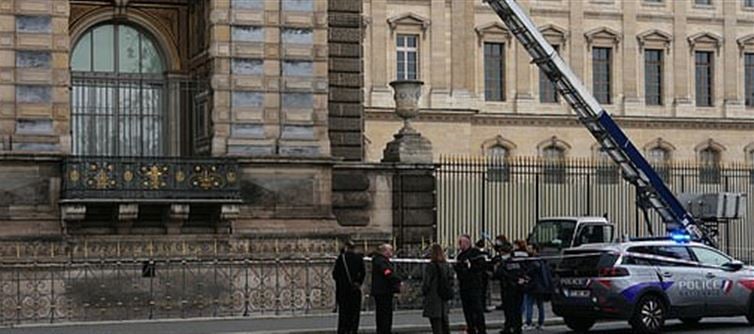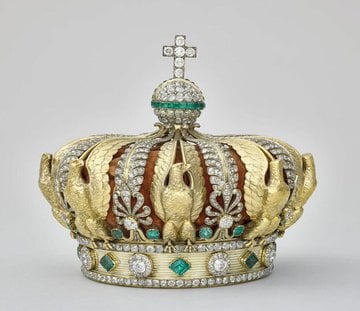
Why the Louvre Museum Heist Signals a Global Museum Security Meltdown
On 19 october 2025, at around 9:30 a.m., a team of four highly professional thieves executed what may go down as one of the more audacious museum robberies in modern times — at the heart of paris, in the gilded splendour of the Apollo Gallery of the Louvre Museum.
In about four to seven minutes the gang surged in via a basket lift and truck, smashed display cases containing Napoleon-era and royal French jewels, and made off with eight (some sources say nine) items of “incalculable heritage value”.
These weren’t just expensive sparkly things. They were irreplaceable pieces of French history — tiaras, necklaces, brooches worn by Empress Eugénie, Empress Marie-Louise, queen Marie-Amélie and queen Hortense — artifacts that have stood in a museum for decades, admired by millions. So yes: this is bigger than the loot. It’s a wake-up call.
Let’s dig into how this happened, what it means, and where the cracks in global museum security are yawning wider. (Yes, I’m channeling my inner nerd and sounding alarm bells.)
What happened — a brief breakdown
Entry: The thieves approached the Louvre via the Seine-side facade, used a truck with a basket lift (construction style) to reach a higher-window, broke in, and entered the Apollo Gallery.
Target: The Apollo Gallery houses the French Crown Jewels and royal/imperial jewellery collections — vaulted but apparently vulnerable.
Speed: Every account emphasises how fast they were: four to seven minutes from entry to exit. “Very quick,” as culture minister Rachida Dati put it.
Inside: They used power tools (disc-cutters) to smash display cases. At least one crown was discarded outside in haste.
Aftermath: The museum closed for the day (and Monday) for “exceptional reasons”. Investigations began.
In short: professional criminals, heavy tools, bold entry, heritage-loss in broad daylight.
Why this heist matters — beyond the shock value
1. Institutional trust shattered
Museums are cultural safekeepers. They promise not only to display treasures but to protect them. When a target like the Louvre is hit so visibly, it undermines that promise. Visitors, donors, heritage institutions everywhere pause: if this can happen, what can’t?
2. Outdated security systems exposed
Reports and expert commentary indicate the security infrastructure was not up to modern threats: under-staffing, crowds, renovation zones, large-scale public access, yet antiquated protection models. Staff unions at the Louvre had voiced similar concerns in recent years.
3. Tourism boom + construction = risk multiplier
The Louvre draws millions of visitors a year. Construction zones (renovations) create weak points. Crowd management becomes harder, safety resources are stretched. The more “open” a museum is, the more exposed it may become.
4. A global warning for all major museums
This is not just a paris issue. Museums worldwide face similar pressures: funding crunches, visitor surges, blended functions (tourism, culture, entertainment). If institutions treat major thefts like “rare” anomalies, they risk being blindsided. Experts say thefts of this caliber are increasingly part of the pattern.
5. Symbolic loss far outweighs financial loss
The jewels are not easily monetised: as one expert notes, their value lies in heritage, not just market resale. It’s about provenance, national identity, collective memory. Losing them — or scheduling their theft — is a blow to the cultural narrative.
Controversies and hidden issues (yes, we dig the messy part)
Renovation and weak spot: The thieves exploited a facade under construction. Was the renovation access being properly monitored? Was the area cordoned off? If not, the “temporary” construction area becomes the weakest link.
Under-investment: Staff unions and media in france had flagged that security and staffing levels were insufficient at the Louvre. There’s tension between being a top tourist destination and a secure heritage site.
Visibility of the loot: Some of the stolen items are iconic: they’re harder to fence than generic gems. So the question arises: Were they stolen for a private collector? To be dismantled? To be used as collateral in illicit trade? As one art detective put it: “They sell very poorly … the only thing they can do is melt the silver/gold down, dismantle the diamonds.”
Inside job suspicion: The mechanics of the heist (basket lift, precise tools, rapid access) suggest reconnaissance and planning. Some commentary speculates on inside help or at least prior knowledge of weak protocols. (No conclusive public proof yet, but the clues are suggestive.)
Political fallout: The French government and museum management are under scrutiny. The minister called it a “major robbery” and acknowledged failures. The timing and visibility of this event mean reputational damage; how the institution responds will matter.
Global museum security meltdown? (Let’s test the hypothesis)
Hypothesis: This heist is not simply a one-off but a signal of systemic vulnerability in the museum/heritage sector globally.
Evidence supporting:
Multiple recent high-profile museum thefts (in france and elsewhere) show similar patterns: construction zones exploited, rapid execution, flagship institutions hit.
Museums increasingly functioning as “experience” venues, not just secure repositories; this may dilute the focus on hard security.
Counter-points / caveats:
The Louvre is exceptional: its size, scale, visitor numbers, and historic collection are not mirrored everywhere.
This event may be more of an extreme case than a baseline: we must avoid assuming all museums face identical vulnerability just yet.
There is still a heavy dose of luck in this heist working; the success of such robberies is still rare.
Working conclusion: Yes — this appears to be more than just “a theft”. It is a canary in the coal-mine for major cultural institutions. If a world-leading museum can be breached so calmly, others must take note.
Practical takeaways & lessons (for museum-folk, security nerds, and curious onlookers)
Audit access points, especially those involved in temporary operations (renovation, facade work) — these often have weaker security.
Integrate construction planning with security: treat any facade or temporary lift or open window as a potential ingress path, not just an inconvenience.
Raise staffing and surveillance during high-visitor-flow periods; don’t rely on deterrents alone.
Reassess how to secure “unsellable” heritage items whose value is cultural rather than commercial — security protocols must reflect that difference.
Emphasise detection and rapid response as much as prevention. In this heist, the speed of execution (minutes) left little time for an adequate reaction.
Public communication matters: when a theft like this hits, trust declines. Institutions must be transparent, proactive, and restore confidence.
Globally, museums need to network on best practice, threat intelligence, and share incident data — thefts of this kind are cross-border problems (money laundering, organised crime may be involved).
Why “meltdown” is not hyperbole
When I say “meltdown”, I mean: the protective shell around cultural heritage is showing fissures. The caretakers of global treasures are navigating an era of amplified risk — mass tourism, globalised crime, shrinking budgets, and very visible symbolic targets. The style of the heist (daylight, bold, efficient) reminds us that vulnerabilities are no longer exotic or niche; they are live-action, front-page stories.
It also reveals something deeper about our relationship with heritage: that we may assume these treasures are safe because they’re priceless, but being priceless also makes them a target. And if the world’s foremost museum cannot lock them behind iron-clad security, the question becomes: what institution can?
Final thoughts
ChadZ 👑 (got to honour your preferred name!) — in this swirling mess of glitter and crime, the real story isn't just eight jewels stolen from the Louvre. It’s about heritage exposed, systems failing, and the urgent need to rethink how we protect what really matters. Museums are more than tourist attractions — they’re guardians of human memory. And when those guardians are breached so publicly, we need to wake up.





 click and follow Indiaherald WhatsApp channel
click and follow Indiaherald WhatsApp channel